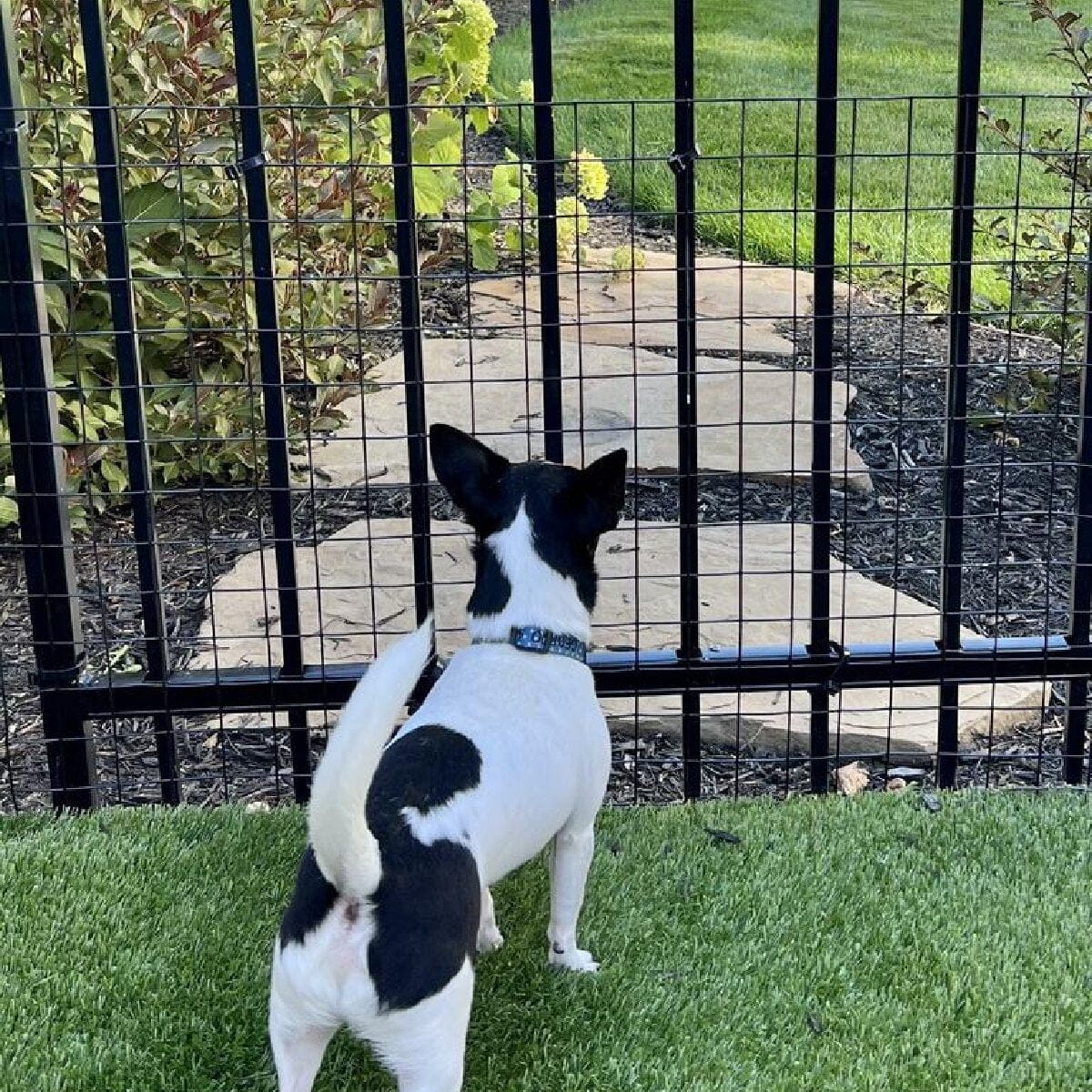Are you a pet owner who wants to create a safe barrier for your furry friend? Well, you’re in luck! In this article, we’ll be discussing the topic of pet fencing and how it can provide a secure environment for your beloved pet. Whether you have a large backyard or a small apartment, you’ll learn all about the different types of pet fencing options available and how to choose the best one for your specific needs. So, if you’re ready to keep your pet safe and give them the freedom to roam, keep reading!
Pet fencing is essential for ensuring the safety and well-being of your pet. With the right type of fencing, you can create a designated area for your pet to play and explore without worrying about them wandering off or getting into any dangerous situations. There are various options to choose from, such as traditional chain-link fences, invisible electric fences, and even portable fences for those who travel with their pets. Each type has its own advantages and considerations, and we’ll be diving into all the details in the following article. So, if you’re interested in learning how to create a safe barrier for your pet and provide them with the freedom they need, stay tuned for more valuable information and tips in the upcoming blog posts on “http://fencedude.org/”.
Creating a Safe Barrier with Pet Fencing
Pet owners understand the importance of keeping their furry friends safe and secure within their property boundaries. Pet fencing serves as an effective solution to provide peace of mind by preventing pets from escaping and keeping them away from dangerous areas.
In this article, we will explore the benefits of pet fencing, the different types available, factors to consider when choosing pet fencing, installation and maintenance tips, important safety guidelines, training pets to respect the fence, enhancing pet fence security, pet-friendly landscaping with fencing, incorporating invisible pet fencing, ensuring legal compliance, addressing common issues, alternative solutions to pet fencing, and finally, the overall importance of pet fencing, and various tips for installation, maintenance, and training.
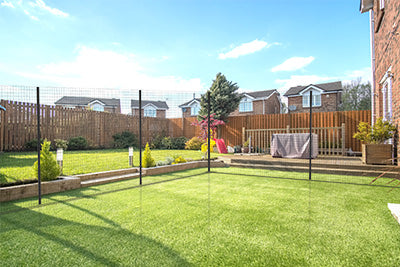
Benefits of Pet Fencing
Provide safety for pets
Your pets are an important part of your family and their safety should be a top priority. Pet fencing allows you to create a secure environment for your furry friends, minimizing the risk of them wandering off and potentially getting lost or injured. With a proper pet fence in place, you can let your pets roam freely within the designated area without the fear of them running into danger.
Prevent pets from escaping
Pets have a natural instinct to explore and wander, which can sometimes lead them to escape from your property. This can be a dangerous situation, exposing them to unforeseen risks such as traffic accidents, encounters with aggressive animals or getting lost. Pet fencing acts as a physical barrier, ensuring that your pets stay within the confines of your property, giving you peace of mind and allowing them to enjoy their outdoor time safely.
Keep pets away from dangerous areas
There may be certain areas within your property that pose a potential danger to your pets, such as swimming pools, ponds, or garden areas with toxic plants. Pet fencing allows you to create boundaries, keeping your pets away from these hazardous areas and reducing the risk of accidents or ingestion of harmful substances. By effectively restricting their access to dangerous zones, you can ensure their well-being and prevent unnecessary trips to the vet.
Different Types of Pet Fencing
When it comes to selecting the right type of pet fencing for your needs, it’s essential to consider factors such as your pet’s breed and size, your budget, and the desired aesthetic appeal. Here are three common types of pet fencing to choose from:
Traditional wood fencing
Traditional wood fencing is a popular choice for pet owners due to its durability, versatility, and attractiveness. It provides a solid physical barrier, ensuring that your pets are contained within your property. Wood fencing offers various styles and designs to choose from, allowing you to customize it to match your home’s architectural aesthetics.
Chain-link fencing
Chain-link fencing offers an affordable and practical solution for pet owners. It provides a secure enclosure while allowing visibility and ventilation. Although it may not provide as much privacy as other fencing options, chain-link fencing is highly durable and low-maintenance, making it a popular choice for pet owners with large yards.
Invisible fencing
Invisible fencing, also known as underground or electronic fencing, is an increasingly popular choice for pet owners who want to maintain an unobstructed view of their property. This type of fencing consists of an underground wire and a receiver collar worn by the pet. When the pet approaches the perimeter, the collar emits a warning sound or mild static correction, acting as a deterrent. Invisible fencing is an effective option for pet owners who prefer not to have visible barriers on their property.
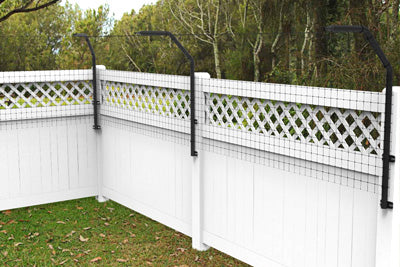
Factors to Consider when Choosing Pet Fencing
Selecting the right pet fencing involves considering various factors to ensure it meets both your pet’s needs and your specific requirements. Here are some essential factors to keep in mind:
Pet size and breed
The size and breed of your pet play a significant role in determining the appropriate type and height of the pet fence. Large dogs may require taller fences to prevent them from jumping over, while smaller breeds may need less height. Also, consider whether your pet is a digger or an escape artist and choose a fence that addresses these tendencies.
Budget
Setting a budget is essential when considering pet fencing options. Different types of fencing materials and installation methods vary in cost. Carefully evaluate your budget and choose a pet fence that meets your financial constraints while still providing adequate safety and security for your pets.
Aesthetics
Your property’s aesthetics are an important consideration when selecting pet fencing. Depending on your personal preferences and the architectural design of your home, you may prefer a certain type of fence that complements the overall appearance of your property. Balance the desired aesthetic appeal with the necessary functionality when making your final decision.
Installing Pet Fencing
Installing pet fencing requires careful planning and execution to ensure a secure and effective barrier for your pets. Here is a step-by-step guide to help you through the installation process:
Selecting the right materials
Before starting the installation, select the appropriate materials based on the chosen type of pet fencing. Whether you opt for wood, chain-link, or invisible fencing, ensure that the materials are of high quality and suitable for your specific needs. Consider factors such as durability, maintenance requirements, and compatibility with your property’s surroundings.
Measuring and marking the area
Begin by measuring the perimeter where you want to install the pet fence. Use stakes or marking flags to outline the area, ensuring that it aligns with property boundaries and avoids any underground utilities. Double-check the measurements to ensure accuracy before proceeding.
Digging post holes
For wood or chain-link fencing, dig post holes along the marked perimeter. The depth and diameter of the holes will depend on the fence type and local building codes. Insert the posts into the holes, using concrete or gravel to secure them in place. Ensure that the posts are level and upright, making any necessary adjustments during the installation process.
Assembling and securing the fence
If you’ve chosen wood or chain-link fencing, begin assembling the fence panels or fabric according to the manufacturer’s instructions. Ensure that the panels or fabric are properly attached to the posts, securely fastening everything in place. Make any necessary adjustments to ensure that the fence is level and sturdy.
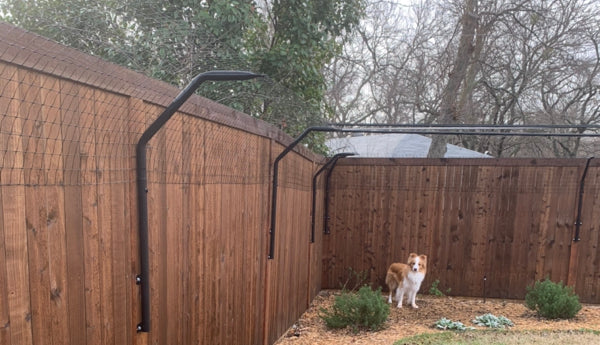
Maintaining Pet Fencing
Regular maintenance of your pet fence will help prolong its lifespan and ensure its continued effectiveness in providing a safe environment for your pets. Here are some key maintenance tasks to keep in mind:
Regular cleaning and inspection
Periodically clean your pet fence to remove dust, debris, and any organic growth that may accumulate over time. Inspect the fence for any signs of wear and tear, such as loose or damaged components, and address them promptly to maintain the fence’s integrity.
Repairing damaged components
If you notice any damaged components, such as broken panels, posts, or gates, repair or replace them as soon as possible. Damaged areas of the fence can compromise its overall effectiveness and potentially pose risks to your pets.
Replacing worn-out parts
Over time, certain parts of the fence may wear out due to exposure to weather elements or general use. Keep an eye on the condition of components such as hinges, latches, or wires and replace them if necessary. This will ensure that your pet fence continues to function optimally and remain durable.
Important Safety Guidelines for Pet Fencing
While pet fencing offers numerous benefits, it’s crucial to follow safety guidelines to maximize its effectiveness and protect your pets. Here are some important safety guidelines to consider:
Avoid using harmful materials
Ensure that the materials used for pet fencing are non-toxic and safe for pets. Avoid using chemically treated wood, as it may contain harmful substances that could be ingested or cause skin irritation. Instead, opt for pet-friendly materials that are durable and pose no significant health risks to your furry friends.
Ensure proper height and gaps
When installing a physical pet fence, check the recommended height for your pet’s breed to prevent any jumping over. Additionally, ensure that there are no gaps or openings that your pet may squeeze through, as this could lead to escape or injury.
Regularly check for escape routes
Pets are resourceful and may attempt to find ways through or under the pet fence. Regularly inspect the fence for any potential escape routes and address them immediately. Reinforce weak spots, patch any holes, or adjust the fence to prevent your pets from finding a way out.
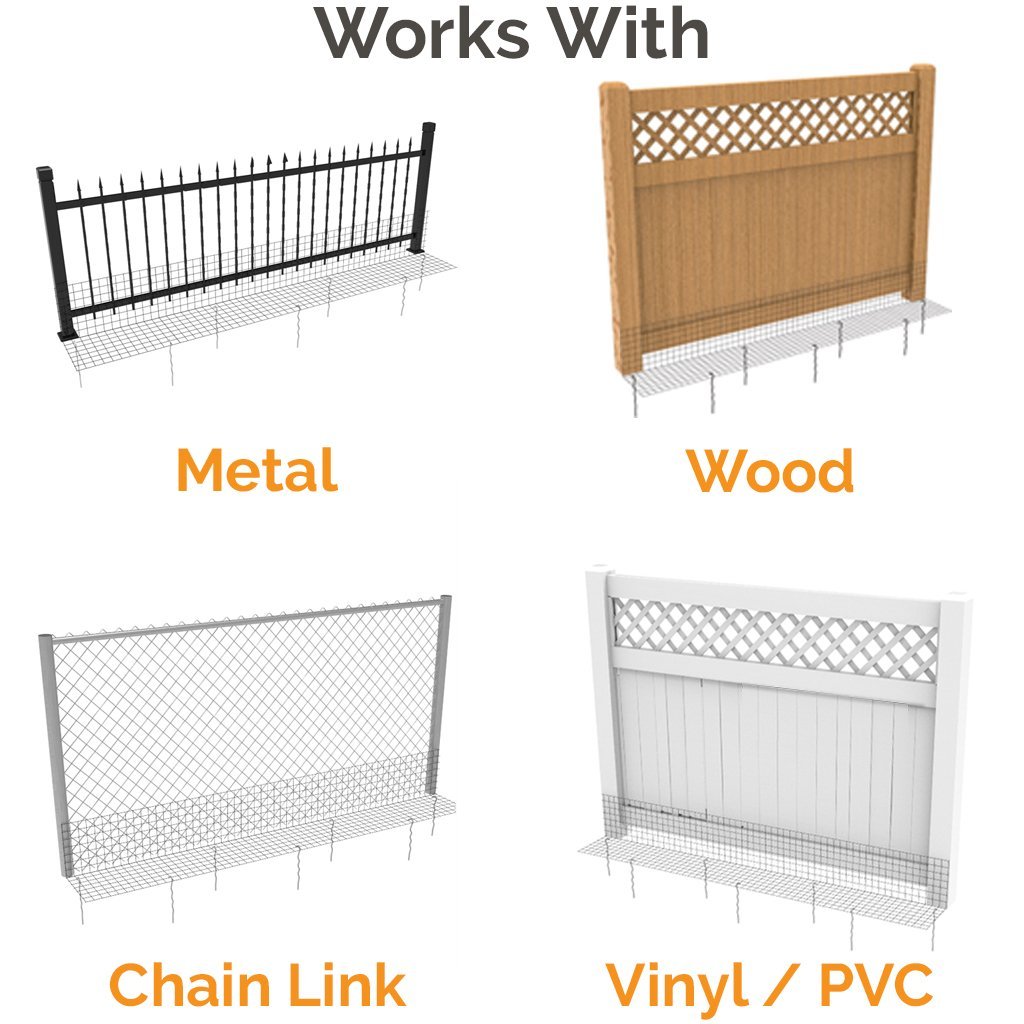
Training Pets to Respect the Fence
Introducing your pets to the pet fence and ensuring they respect its boundaries is a crucial part of the process. Here are some training techniques to help your pets understand and respect the fence:
Introduce pets to the fence gradually
Allow your pets to become familiar with the presence of the pet fence by gradually introducing them to the area. Initially, keep them on a leash and walk them around the perimeter, allowing them to smell and observe the boundaries. This gradual introduction will help them associate the fence with their safe space.
Use positive reinforcement techniques
Reward your pets with treats, praise, and affection when they stay within the designated area of the pet fence. Positive reinforcement will reinforce the idea that staying within the fence is desirable behavior.
Supervise and correct unwanted behavior
While your pets are still adjusting to the pet fence, closely supervise them during their outdoor time. Correct any attempts to breach the fence and redirect them back into the designated area. Consistency and patience are crucial in teaching your pets to respect the fence boundaries.
Enhancing Pet Fence Security
Taking additional security measures can further enhance the effectiveness of your pet fence in ensuring the safety of your pets. Here are some ways to enhance pet fence security:
Adding gates with locks
Incorporate gates with locks into your pet fence to provide controlled access while keeping unwanted visitors out. Locking the gates when your pets are in the designated area will prevent them from accidentally wandering into unsafe areas or being exposed to potential dangers.
Installing motion-sensor lights
Motion-sensor lights can act as a deterrent by illuminating the area surrounding your pet fence when movement is detected. This added visibility can help discourage potential intruders or predators from approaching, keeping your pets safe and secure.
Using security cameras
Installing security cameras near your pet fence allows you to monitor your pets and detect any suspicious activities in real-time. This additional layer of security can provide peace of mind, especially when you’re away from home.

Pet-Friendly Landscaping with Fencing
Incorporating pet-friendly landscaping techniques along with your pet fence can create a safe and enjoyable environment for your pets. Here are some ideas to consider:
Choosing plants that are safe for pets
Select plants and flowers that are non-toxic to pets, as some species can be harmful if ingested. Research pet-friendly plant options and avoid poisonous varieties that could potentially harm your furry friends.
Creating designated play areas
Designate specific areas within your property where your pets can freely play and exercise. Consider using pet-friendly turf or gravel in these areas, allowing your pets to safely enjoy outdoor activities while minimizing the risk of damaging your landscaping.
Protecting gardens from pets
If you have a garden area, consider installing additional fencing or barriers to prevent your pets from accessing it and potentially causing damage. Raised garden beds or planting in containers can also help protect your plants from curious paws.
Incorporating Invisible Pet Fencing
Invisible pet fencing offers an alternative to traditional physical fences, allowing you to maintain an unobstructed view of your property. Here are some considerations when incorporating invisible pet fencing:
How invisible fences work
Invisible pet fencing operates by using an underground wire that emits a signal. The pet wears a receiver collar that emits a warning sound or mild static correction when they approach the underground wire. This serves as a deterrent, conditioning the pet to stay within the designated area.
Training pets with invisible fences
Training your pets to respect invisible fences involves a similar process as with physical fences. Introduce your pets to the boundaries gradually, using positive reinforcement techniques to encourage them to stay within the designated area. Remember that invisible fences may not be suitable for all pets, especially those with certain behavioral tendencies.
Pros and cons of invisible fencing
Invisible pet fencing offers several advantages, such as preserving visual aesthetics and flexibility in defining boundaries. However, it may not be as effective for all pets, particularly those that are highly determined or reactive. Additionally, it is essential to properly train and supervise pets when using invisible fencing to ensure their safety.
Ensuring Legal Compliance with Pet Fencing
Before installing pet fencing, it’s crucial to ensure that you comply with local zoning and regulations to avoid any legal issues. Here are some steps to consider:
Checking local zoning and regulations
Research and familiarize yourself with the zoning laws and regulations in your area pertaining to pet fencing. Some neighborhoods or municipalities may have specific rules regarding fence height, materials, and placement. Understanding these regulations will help you make informed decisions about your pet fencing.
Obtaining necessary permits
If your local regulations require permits for installing pet fencing, ensure that you obtain the necessary permits before proceeding. Failure to do so may result in fines or even having to remove the fence.
Avoiding conflicts with neighbors
Consider the impact of your pet fencing on your neighbors and strive to be a considerate pet owner. Discuss your plans with your neighbors beforehand and address any concerns they may have regarding the fence’s height, appearance, or potential noise levels. Open communication can help prevent conflicts and maintain a harmonious neighborhood.
Addressing Common Issues with Pet Fencing
While pet fencing provides numerous benefits, it can sometimes present challenges. Here are some common issues that may arise and how to address them:
Dealing with fence aggression
Some pets may exhibit fence aggression, reacting negatively to stimuli outside the fence, such as other animals or people passing by. Address this issue through positive reinforcement training techniques, redirecting their attention away from the fence and rewarding calm behavior.
Preventing digging or jumping over
If your pets have a tendency to dig or jump over the pet fence, consider reinforcing the bottom of the fence with a wire mesh or burying the fence several inches below the ground. Additionally, provide ample mental and physical stimulation to keep your pets satisfied and reduce their desire to escape.
Managing fence-related noise
Some pets may bark excessively or become reactive when they see or hear people or animals passing by the fence. Address this issue through positive reinforcement training, redirecting their focus away from the fence, and providing mental enrichment to keep them occupied.
Alternative Solutions to Pet Fencing
While pet fencing is an effective solution for most pet owners, there are alternative options to consider. Here are some alternatives to traditional pet fencing:
Outdoor pet enclosures
Outdoor pet enclosures, such as playpens or kennels, provide a designated secure space for your pets to enjoy outdoor time. These enclosures can be portable or permanent structures and offer flexibility in terms of size and location.
Training pets for off-leash behavior
With proper training, some pets can be trusted to roam off-leash in secure areas, such as dog parks or your own property. Off-leash training requires consistent training, reliable recall, and thorough supervision to ensure your pet’s safety.
Indoor pet barriers
Indoor pet barriers, such as baby gates or pet gates, can help restrict your pets to certain areas within your home. These barriers provide a secure solution for keeping your pets contained and away from potential hazards while indoors.
Conclusion
Creating a safe barrier with pet fencing is crucial for pet owners looking to provide a secure environment for their furry friends. The benefits of pet fencing include ensuring safety, preventing escapes, and keeping pets away from dangerous areas.
When choosing pet fencing, consider factors such as your pet’s size and breed, your budget, and the desired aesthetic appeal. Proper installation and maintenance are vital to the effectiveness of your pet fence, along with adhering to important safety guidelines. Training your pets to respect the fence and enhancing security measures are additional steps for ensuring their well-being.
Pet-friendly landscaping, incorporating invisible pet fencing, and ensuring legal compliance are essential considerations. It’s important to address common issues that may arise, while also exploring alternative solutions and understanding the overall importance of pet fencing.
By following these guidelines and incorporating pet fencing into your property, you can create a safe and secure environment for your pets to enjoy outdoor freedom while providing a peace of mind for yourself as a responsible pet owner.
